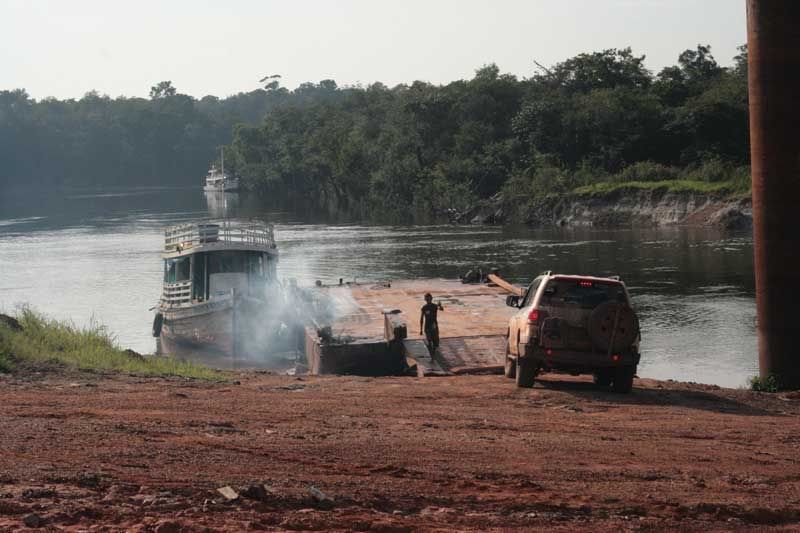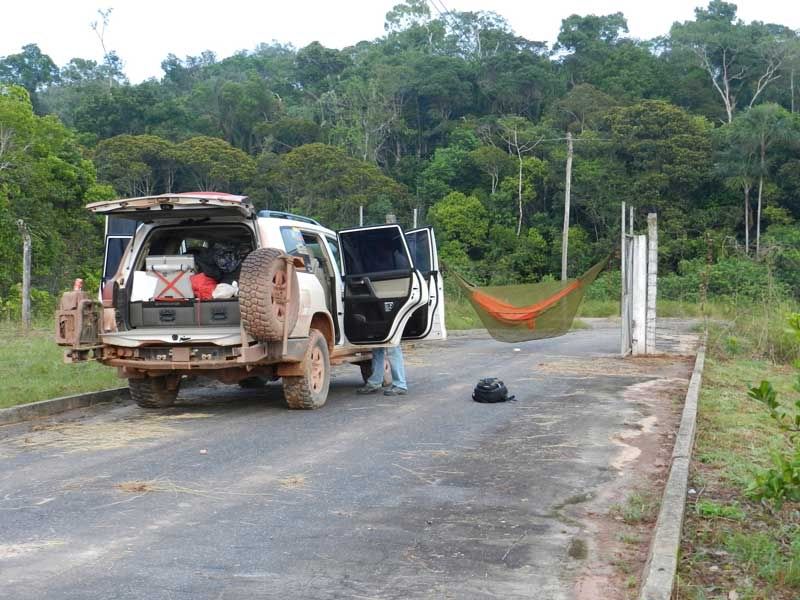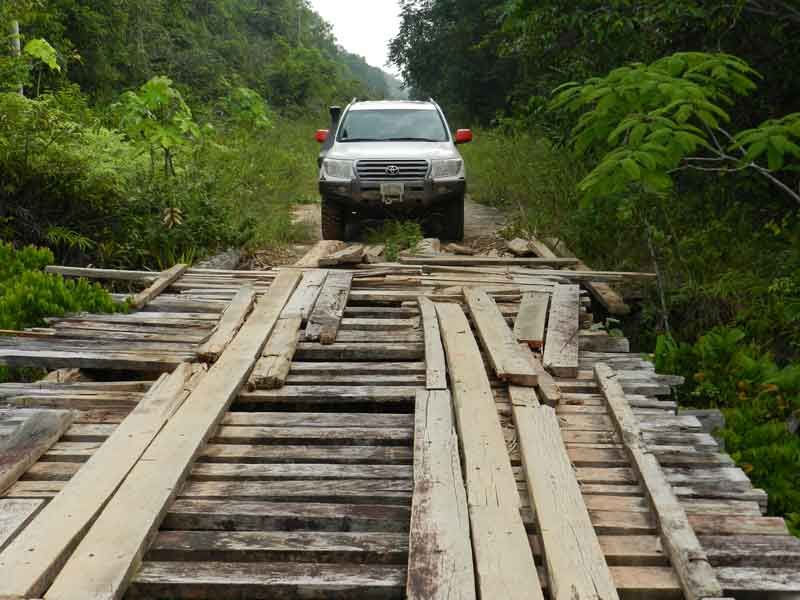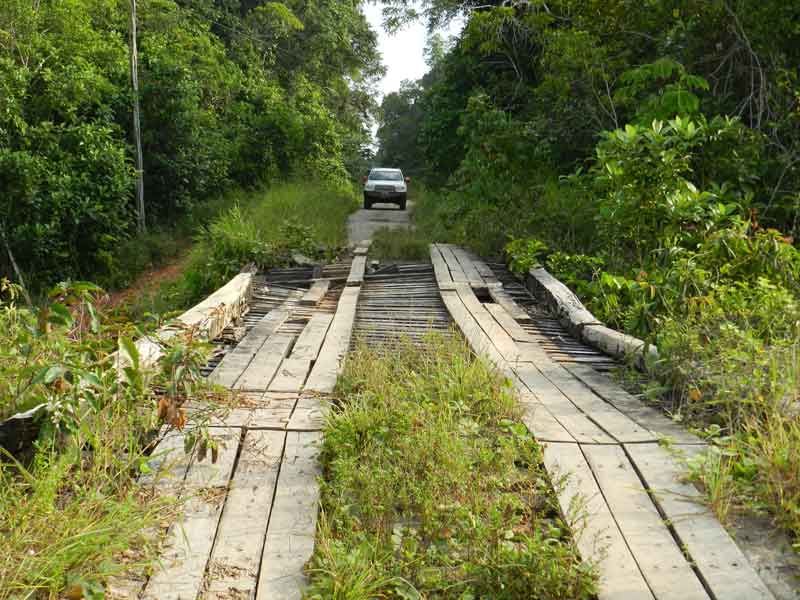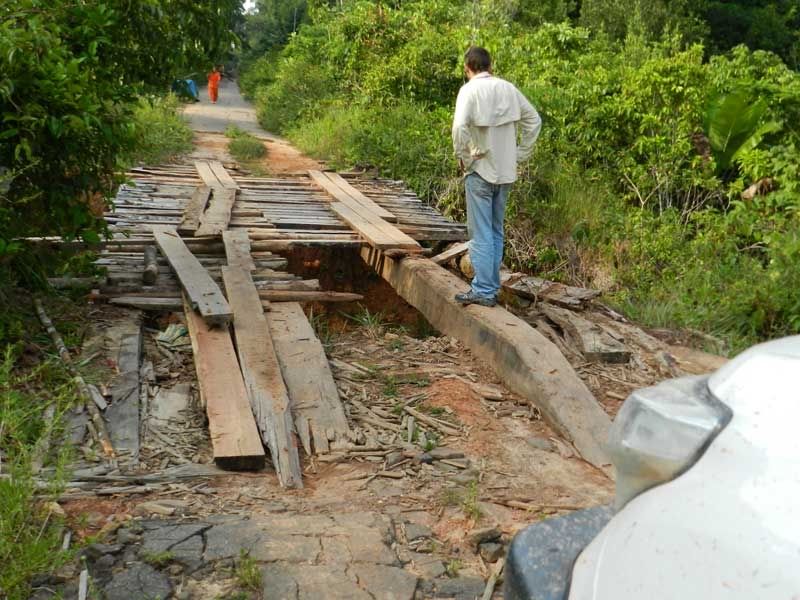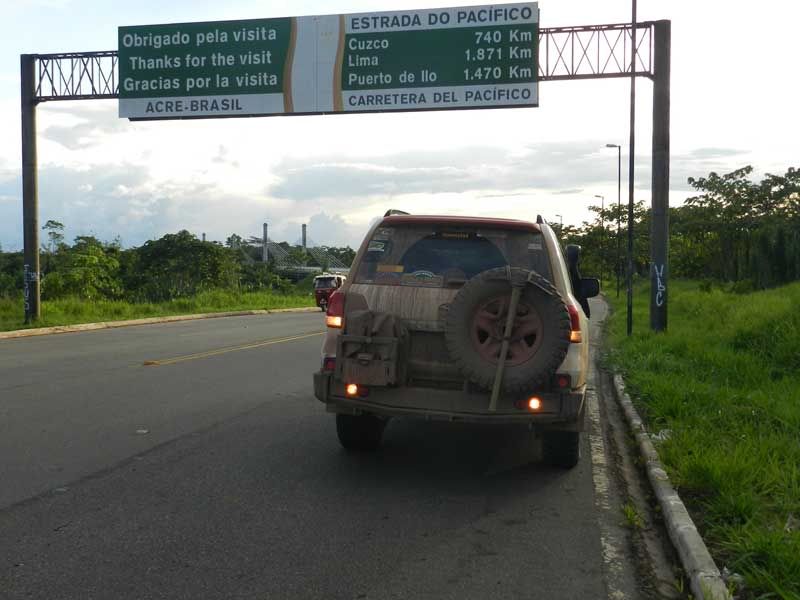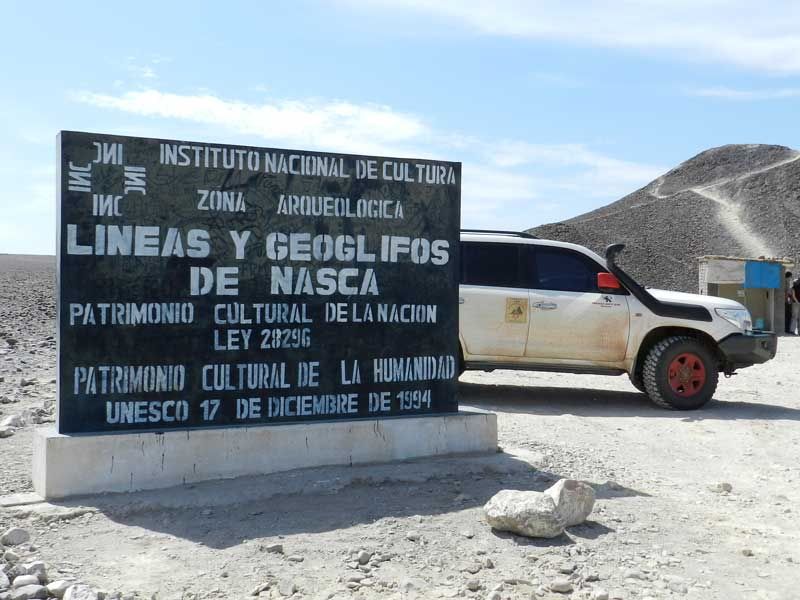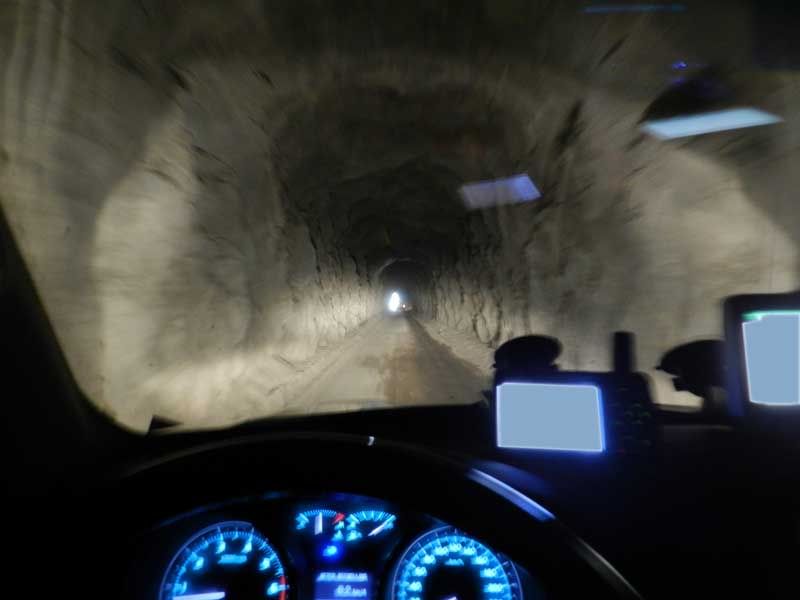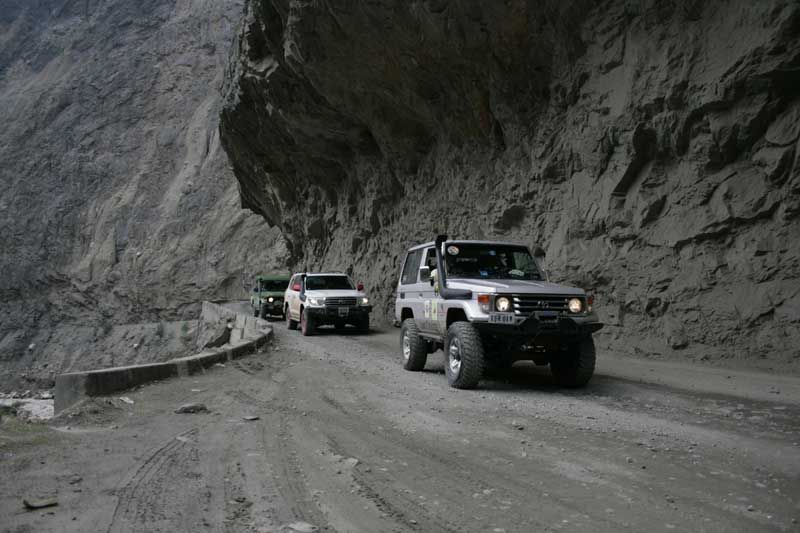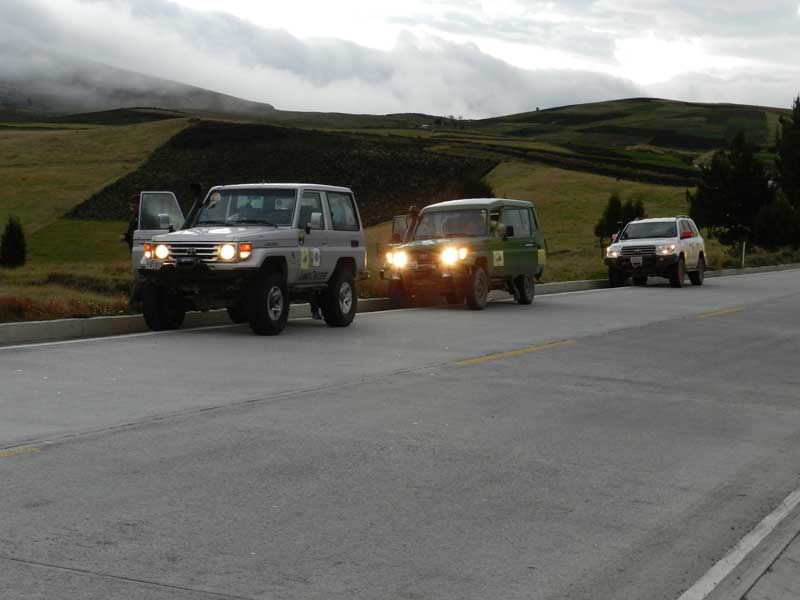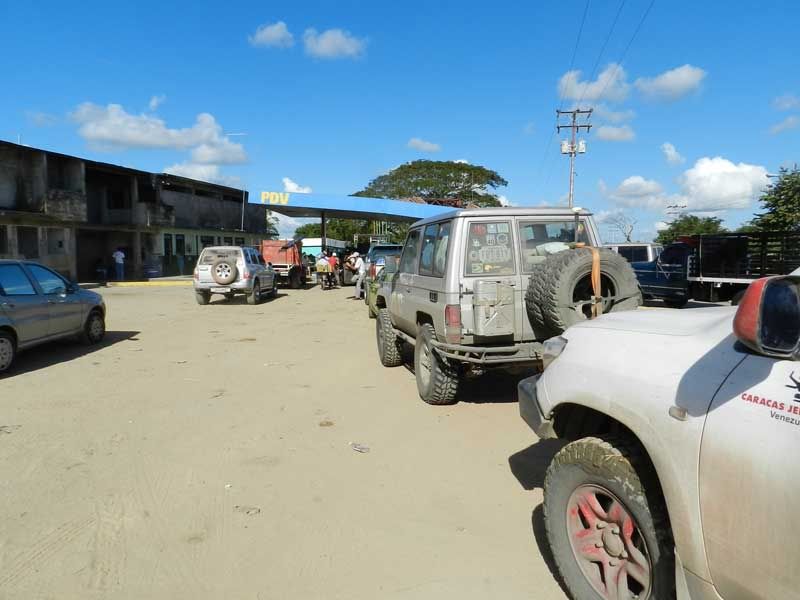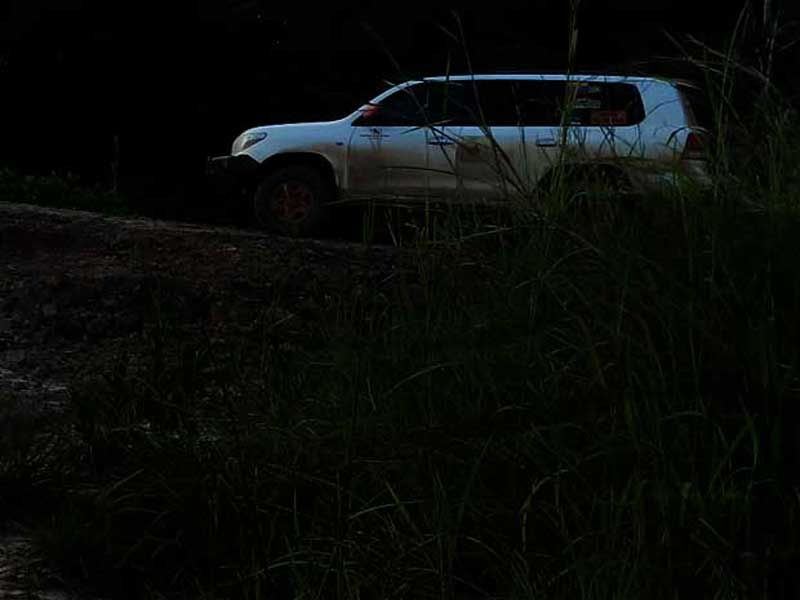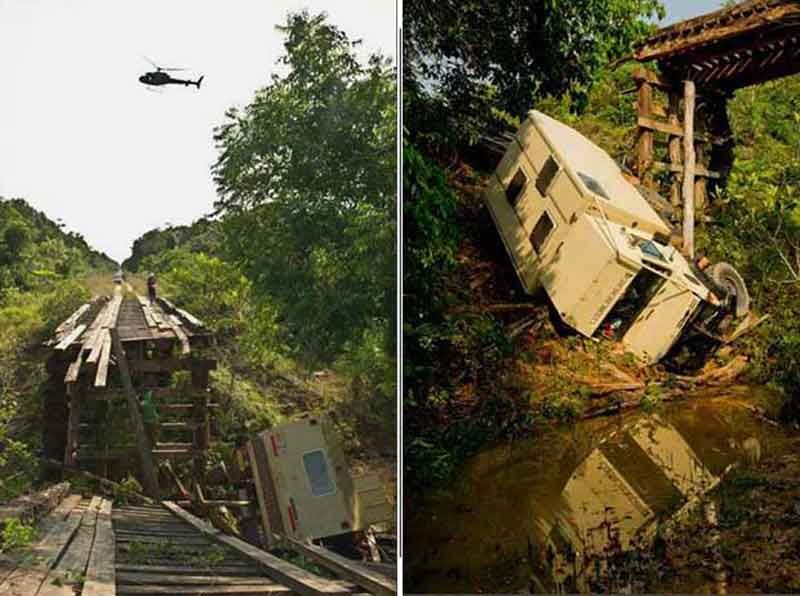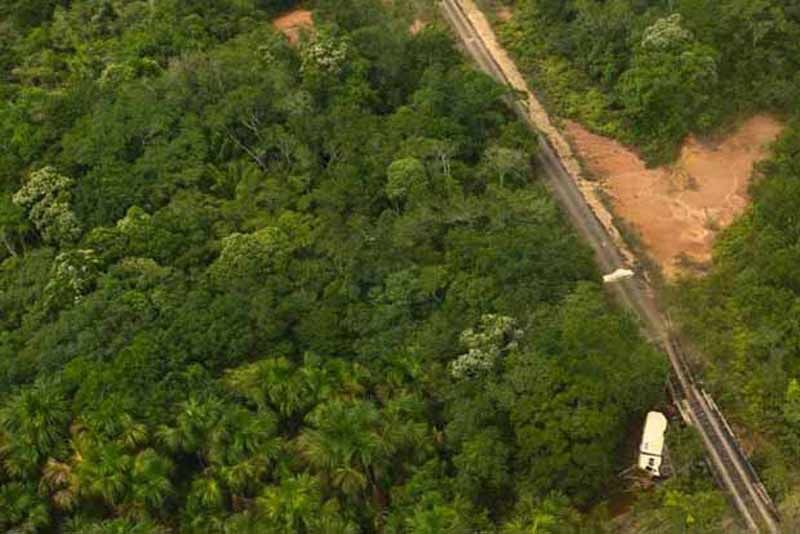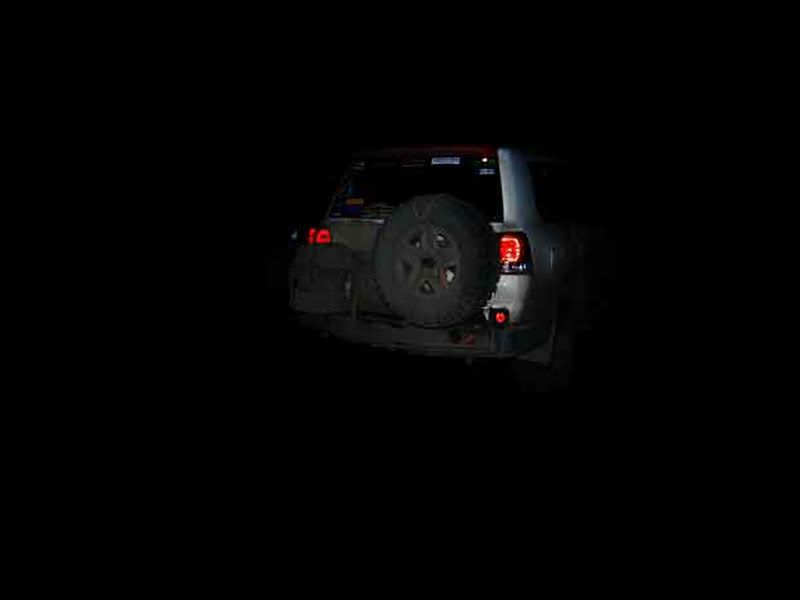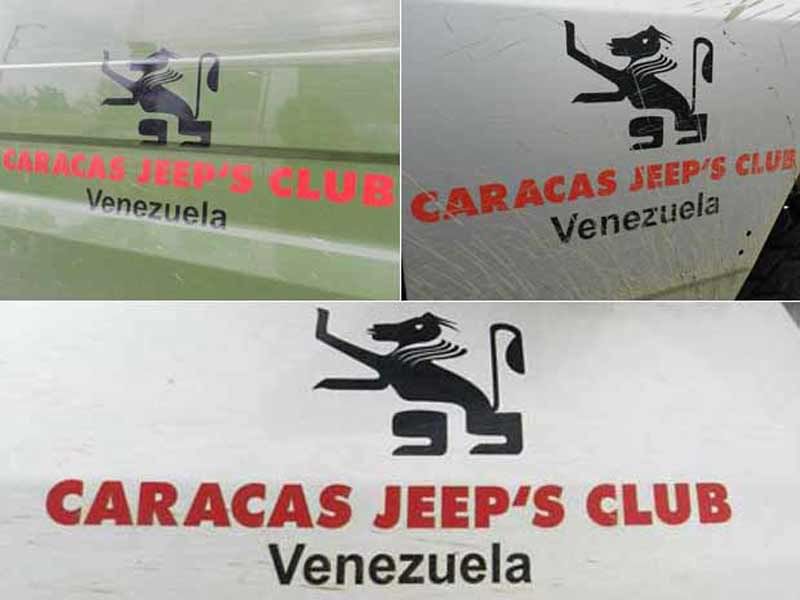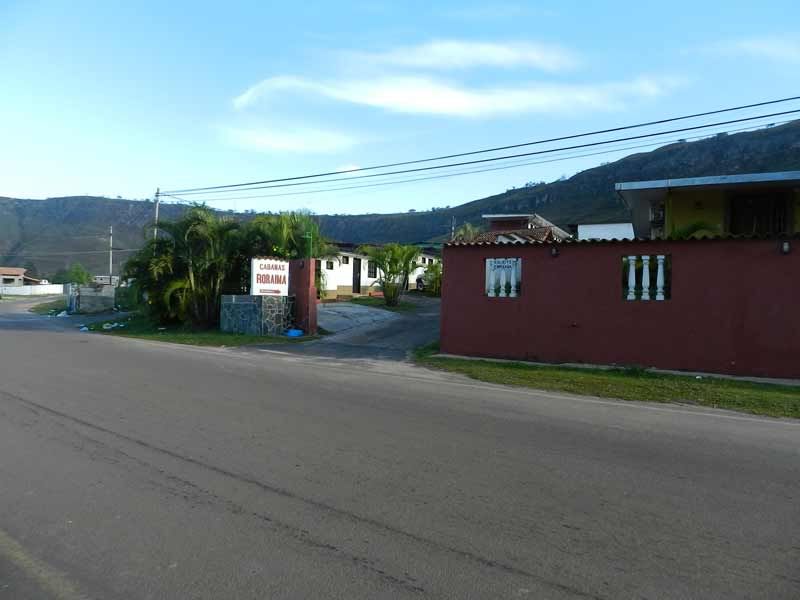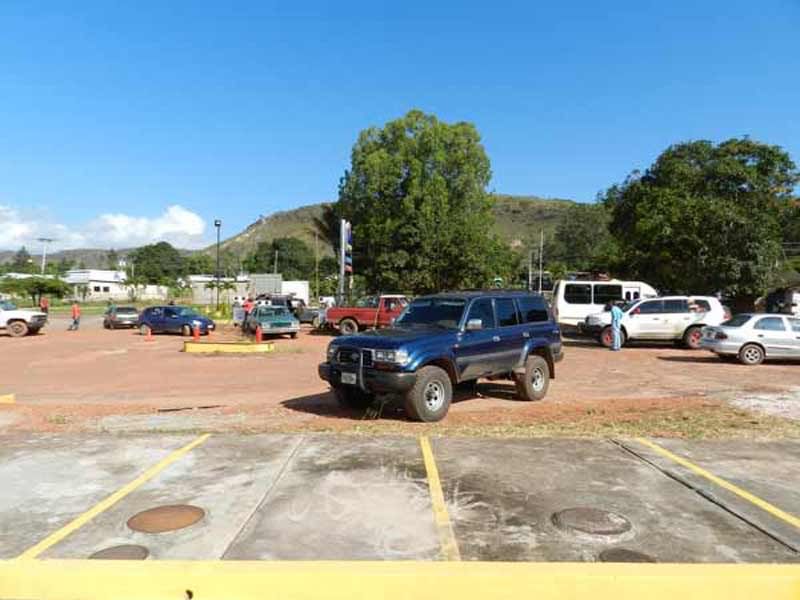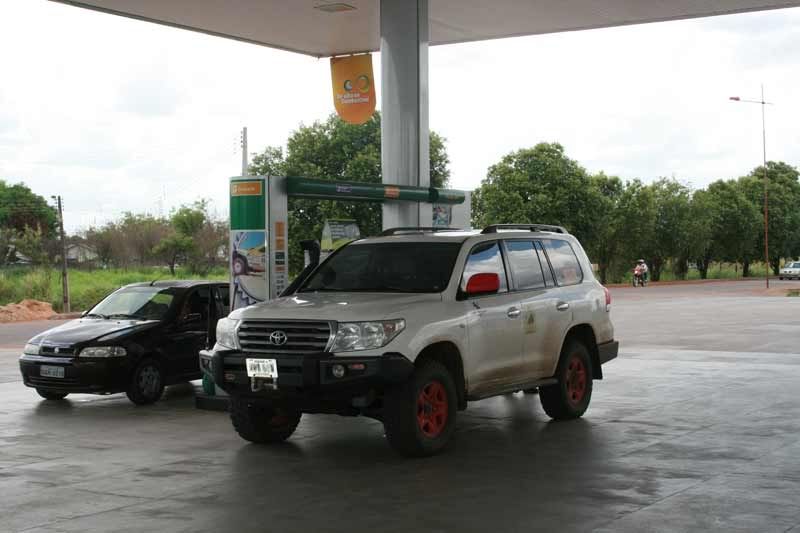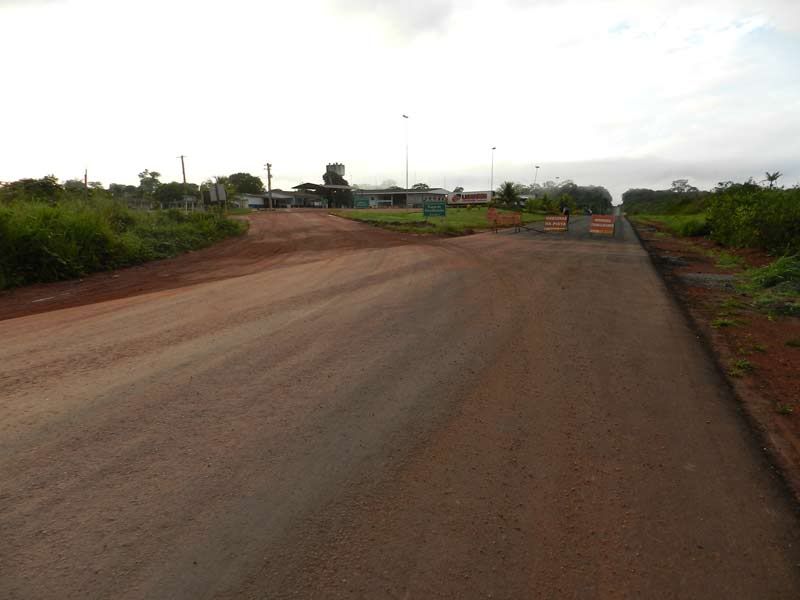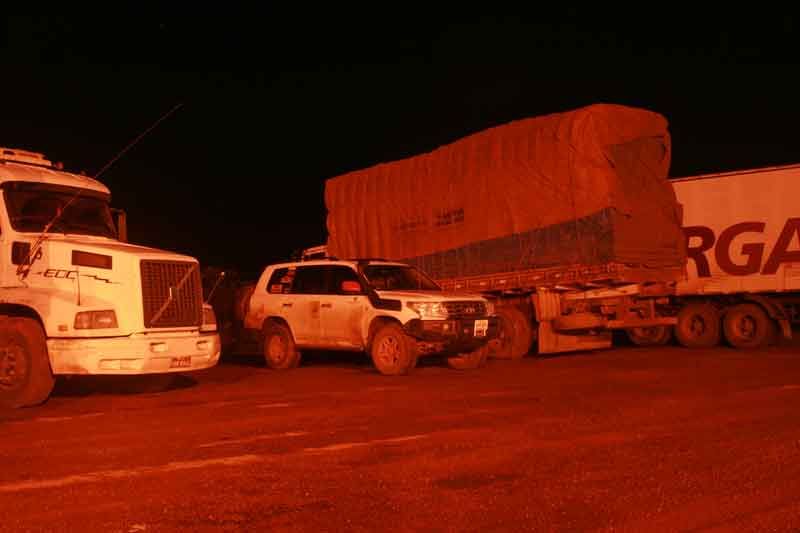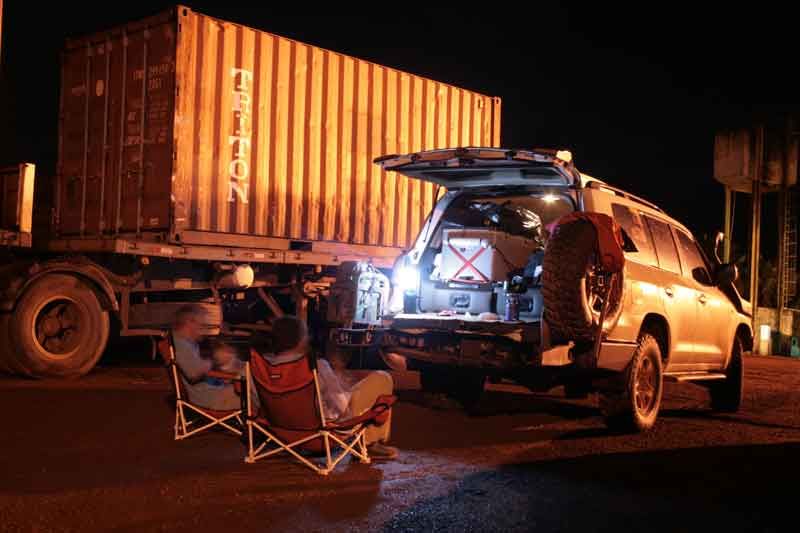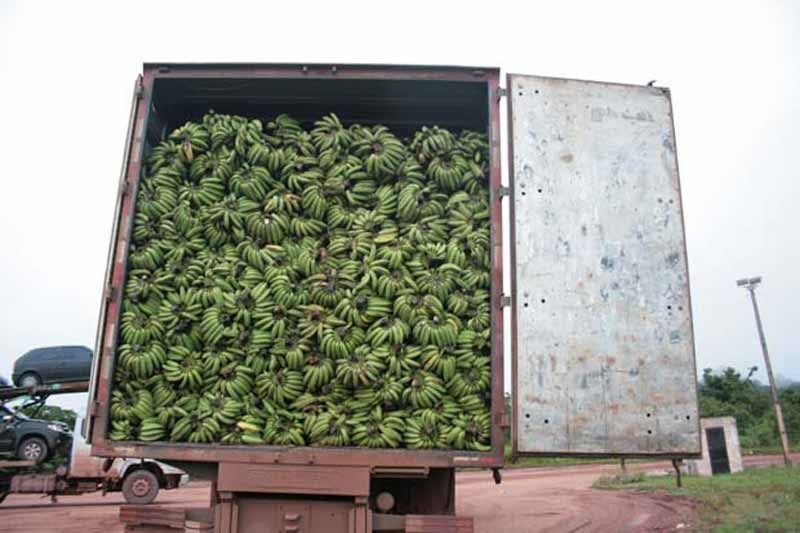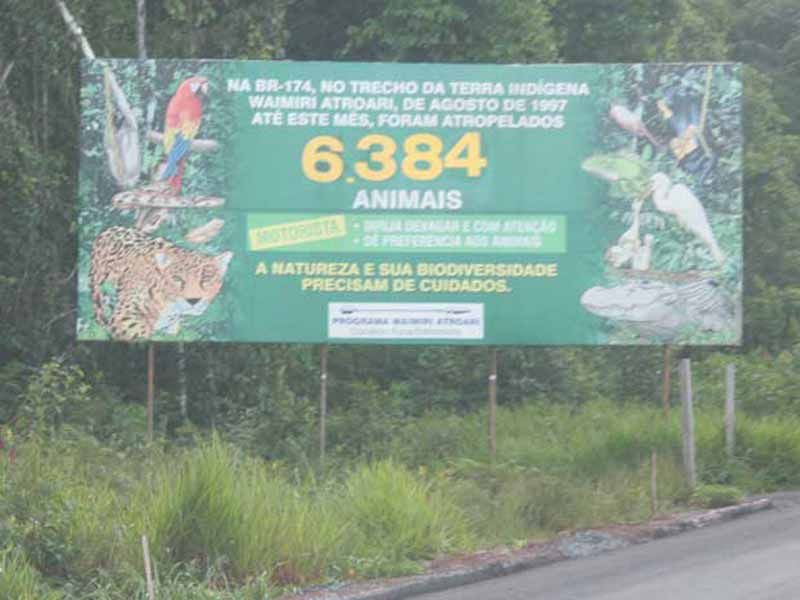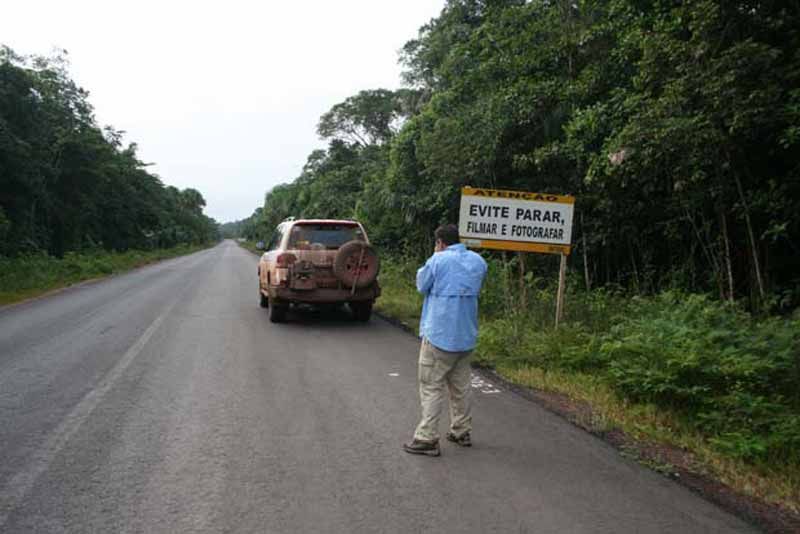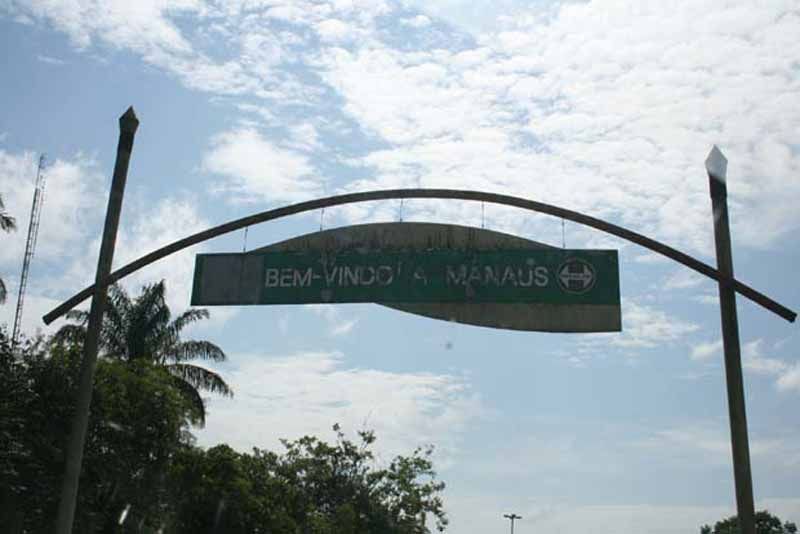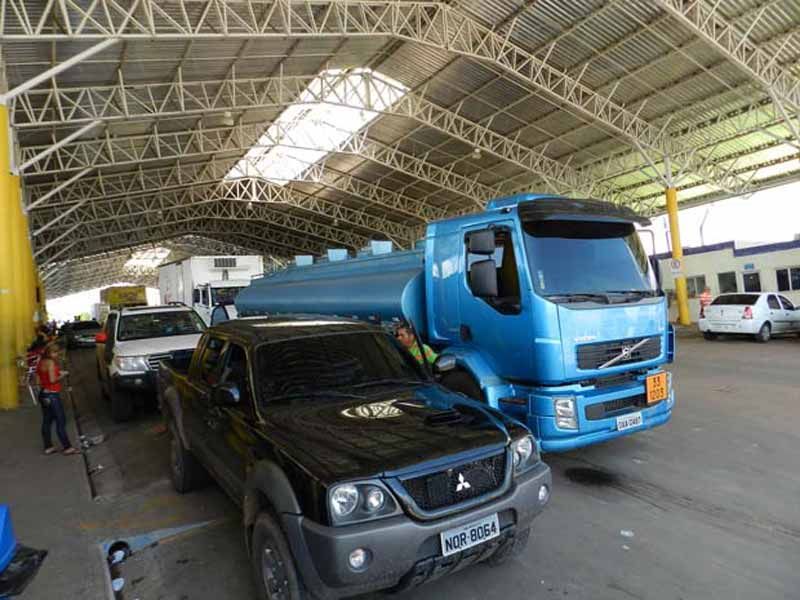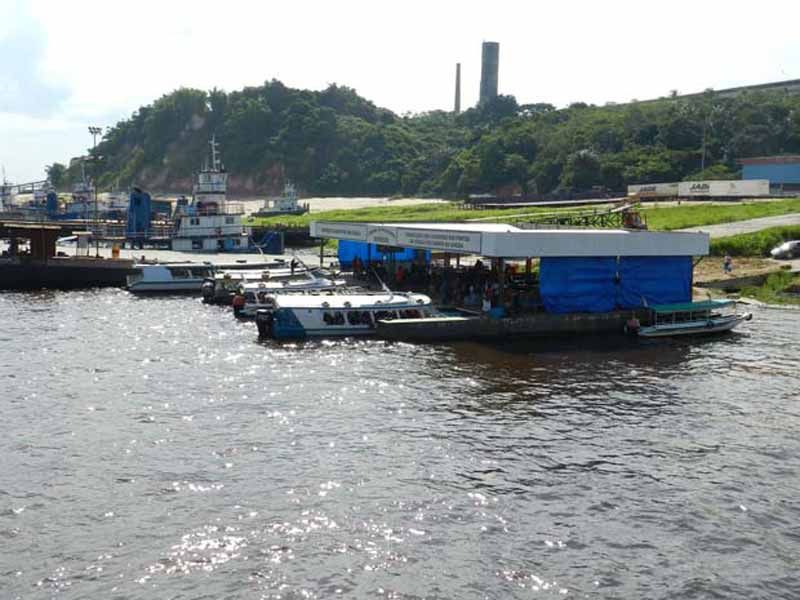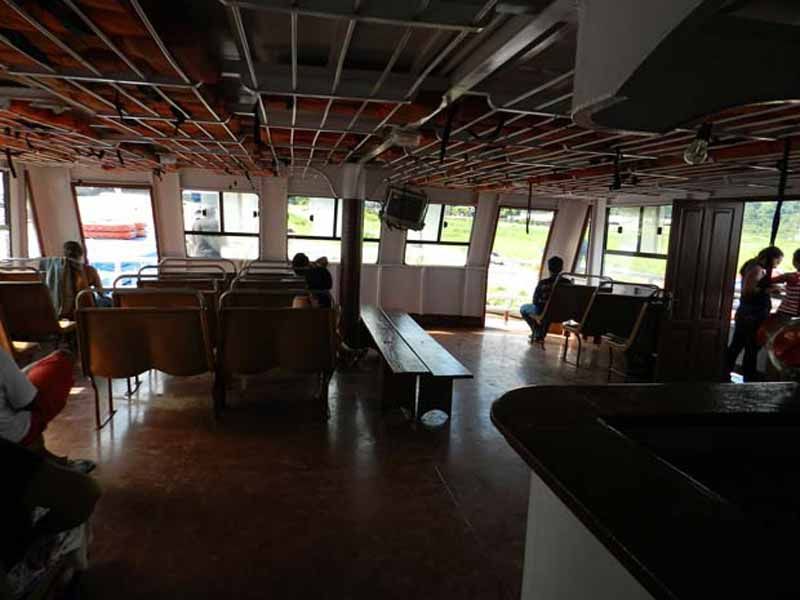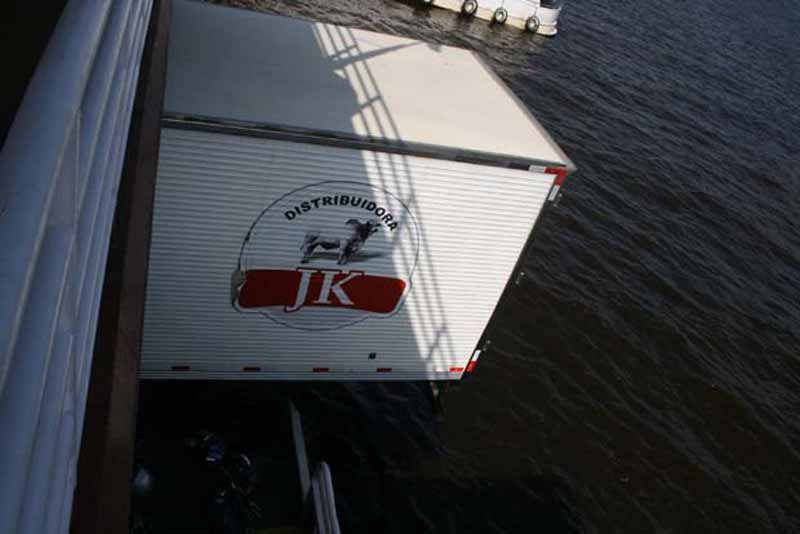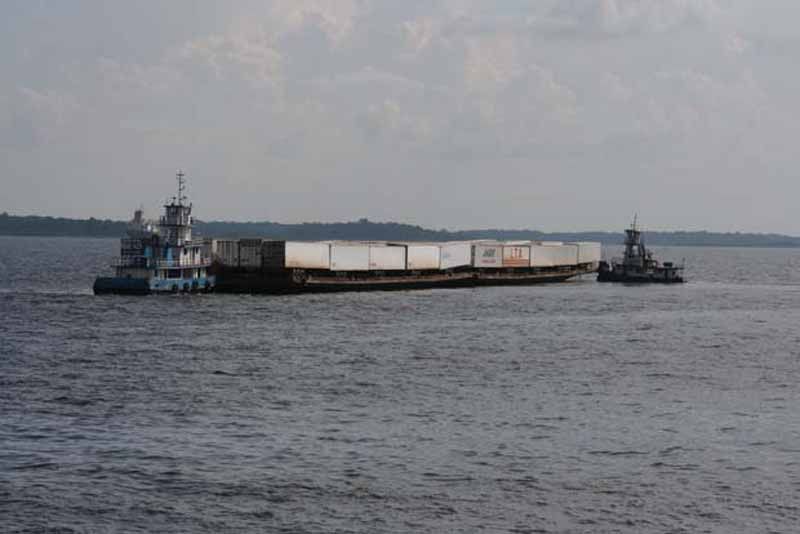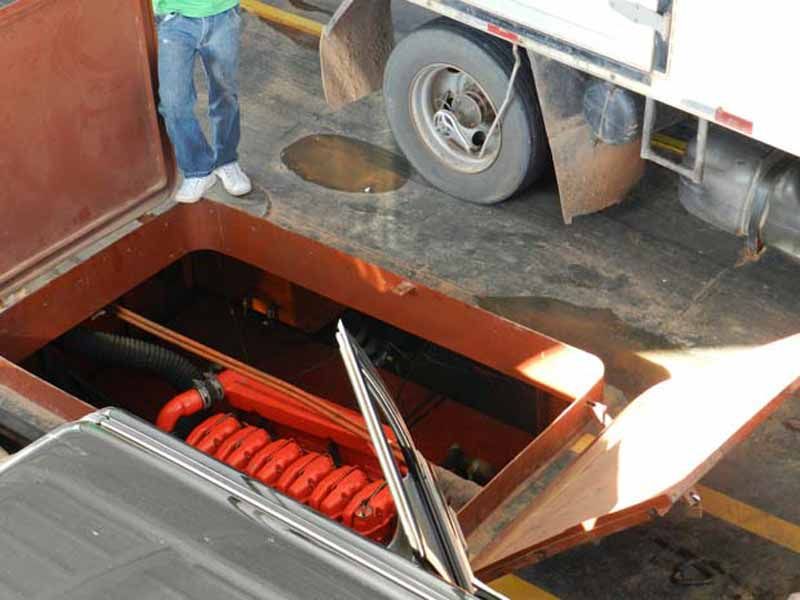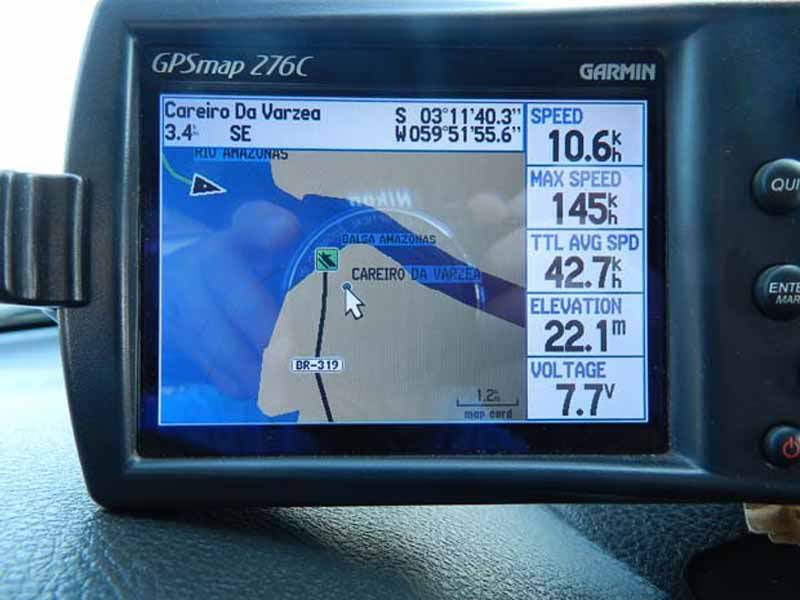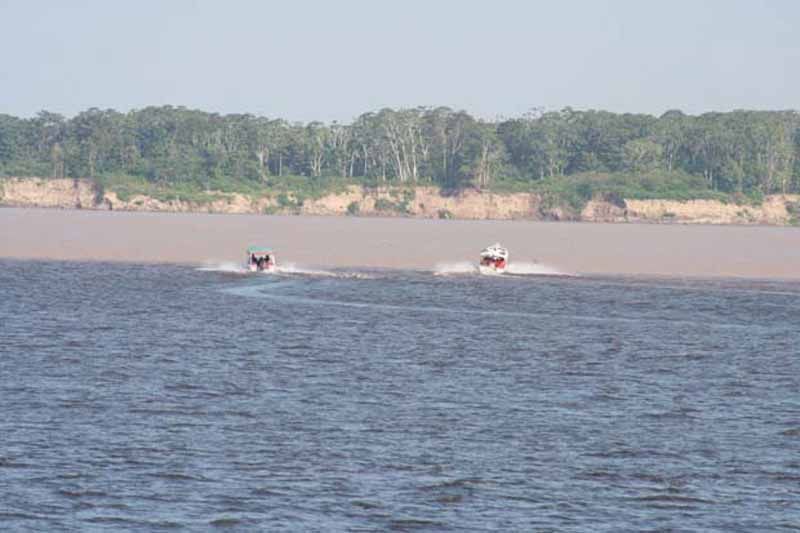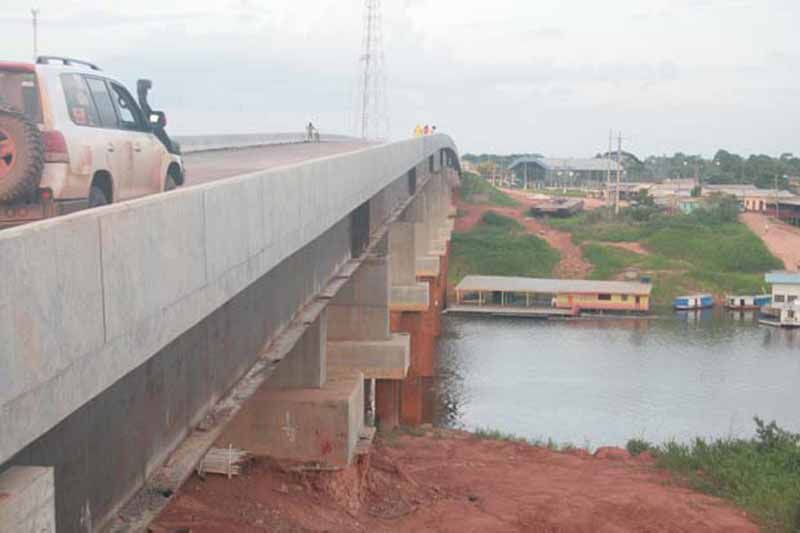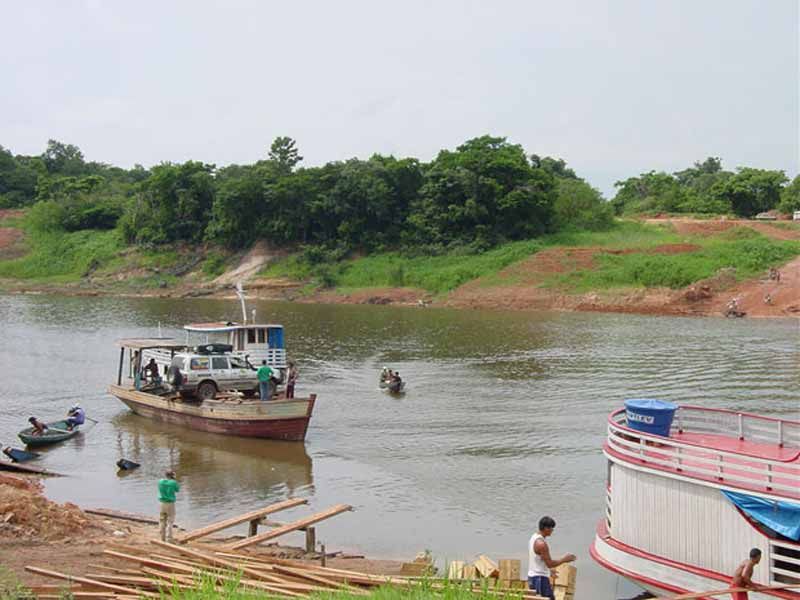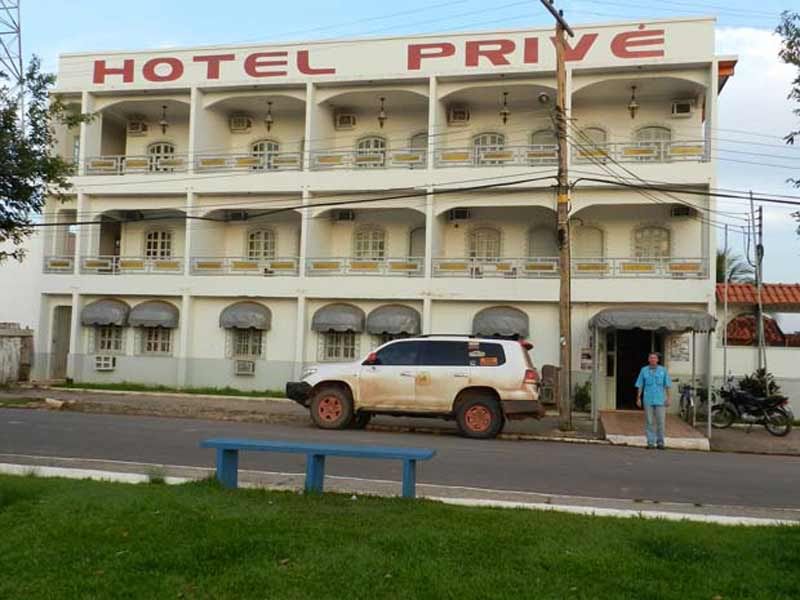Caracas to Cusco in 7 days. Day 1
Saturday March 03, 2.011
From Caracas to Santa Elena de Uairén
Distance: 796 miles (1.281 Km.)
Average Speed: 45.5 mph (73,2 Km/h)
Top Speed: 96.1 mph (154,7 Km/h)
In the dark Amazon jungle night, practically in the middle of nowhere, two friends come to one of the many bridges that are an important part of the journey through the BR-319 in Brazil. In darkness, it’s not easy to judge its condition, or of any of the any other bridges they will have to cross tonight, if they want to stay within the schedule they set when they left Caracas three days ago.
They can’t help but remember that last September, Lesley Norris and Bruce Scott had a hard time when the bridge they were crossing gave under the weight of their Mercedes Unimog. This incident tends to come to their minds whenever they have to face any of this crossings without the security provided by daylight. They are perfectly aware that the Unimog’s 8 tons more than double the weight of their Land Cruiser, but you never know…
Anyway, if they want to be in Cusco in 7 days, in time to join the birthday celebration activities, they would have to keep going at least a couple more hours.
You can find out more about Lesley, Scott, their amazing expedition and this incident here: http://www.treadtheworld.com/
Slow progress in the dark Amazon jungle.
What would you do if you were invited to celebrate a birthday in Cusco?
For many, traveling abroad by car looks like an impossible dream. Others simply wait for an excuse to do it, and when the opportunity shows up, they do it.
On this occasion, the excuse was to celebrate the 70th birthday of our beloved friend, Gabriel Zamora, by arriving to Machu Picchu after walking the Inka Trail, the very day of his birthday. As expected, each of the guests had other commitments and responsibilities, different time availability issues, and very particular ideas about how to address this important invitation.
The happy birthday man, celebrating on top of the Andean peaks. Just the way it should be!
Some guests left for Cusco by plane, others in a car via Colombia and another group, which included our birthday man, left Venezuela by car on November 16 via Brazil. Because of previously undertaken work obligations, two friends set off in a last car, also via Brazil, with a commitment to reach Cusco 7 days later. Even though by then the Inka Trail walk would be completed, the plan was to join the other three cars on the way back from Peru to Venezuela.
This is the story of this last group, whose goal was to join the rest of the party in Cusco on December 9, leaving Caracas on Dec. 3.
And so, they started to prepare the necessary documents to travel abroad with the car, among which is a vehicle inspection by transit authorities. It happened that as soon as the Land Cruiser joined the line for inspection, it was rejected because of the “illegal” aftermarket bumper. Arguments were useless, even though the inspection was just to leave the country. Even explaining that the problem wasn’t the vehicle’s owner responsibility, but of the transit authorities for not carrying out the vehicle homologation process when requested to do so by their owners, as established in the law. This means that they were the ones breaking the law, not our aspiring travelers. Nevertheless, the only answer they got was “these are orders from above”. Who is this guy from above, in a place that doesn’t even have a second floor, who has the power to break the law with a simple order? they asked, but there was no answer. They were left to think that these guys probably just wanted money to issue the inspection paper.
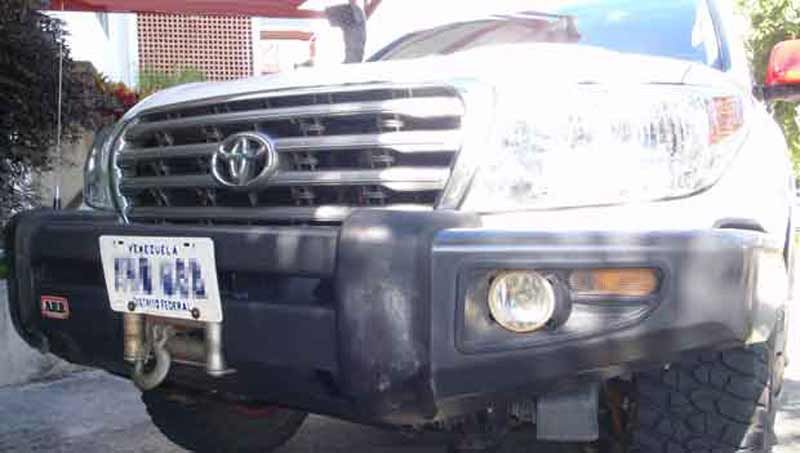
This is the reason why all the trip plans were almost ruined.
Finally, in typical Venezuelan fashion, they had to resort to a friend of a friend, who had an acquaintance, who years ago, worked with the sister of someone who worked with the transit office, and could do the favor of getting the inspection paper for them. So, with a strong sentiment of rage and impotence, they had to agree on solving the inspection issue in this manner if they wanted to leave the country.
It is incomprehensible, that in an arbitrary and illegal way, a public service institution like the traffic office, usurps the right to ignore laws and regulations, just because there are orders “from above”. Well, we guess that is just how things work when a country is ruled by a dictator.
After solving this very unpleasant issue, the rest of the paperwork was quickly resolved. A simple vehicle inspection, an oil change, tire rotation, installing new brake pads. Load it with some food, the usual essential stuff, some personal luggage, and they were set to go.
Having done all this, all that remained was to see if they would be able to leave the country through Santa Elena de Uairén, some 800 miles away, without suffering the ravages of rattling and corruption at checkpoints, because of the bumper, without which, the winch, and much of the originally planned trip may not be possible.
On a new trip with the same old friends.
They left Caracas at 0500 hrs, and found a lot of rain along the way. The bad road conditions, especially in the Laguna de Unare stretch of “highway”, deserve a special mention. It is really embarrassing that we have such an exhibit of cracks, voids, potholes, craters and wells in the roads of our country. The area looks like Afghanistan after a bad day of bombing.
From Caracas at 0500 hrs, they found a lot of rain along the way. Special mention get the bad road conditions, especially the stretch of "highway" that along the Laguna de Unare, serves to prevent the rise of Aguas Calientes. In addition to extremely dangerous, it really is shameful that we have that exhibit cracks, voids, craters and lakes in our country.
Even with the bad conditions, and the anarchy that claim so much time and lives in the roads of our country, they continued to El Callao, where for several days, and until just a few hours ago, a group of miners has closed the road in one of the many protests we see daily throughout this poor nation. This caused a gasoline supply disruption affecting all populations found on the road to Santa Elena, where they could see, not without surprise, huge queues at service stations reminiscent of those that accompanied the famous oil strike of 2002. However, having foreseen this situation, they reached their destination without major difficulties in this regard.
When they were about to arrive to Santa Elena, they were stopped by soldiers at an army checkpoint, where they they had to partially unload the Land Cruiser as part of the most rigorous inspection they had seen. One of the soldiers even requested them to open the sunroof, in order to be able to check with a flashlight, the free space in the roof, where the glass piece is housed when it retracts.
They arrived to their destination after dark, and had a simple pasta dish for dinner in a small local restaurant. From there, they went looking for a place to sleep, as they needed to rest, in order to start all they had to do the next day very early in the morning.
Good night.
